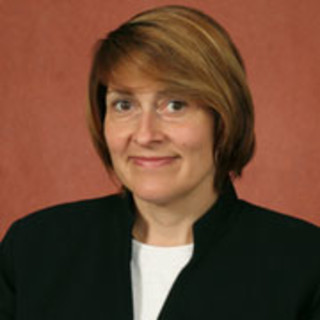 Fifty percent of what medical educators teach you is wrong. And we are not sure which 50 percent that is.
Fifty percent of what medical educators teach you is wrong. And we are not sure which 50 percent that is.
I thought this was an original statement that my father pronounced yearly to each bright and wide-eyed class of first-year students. But I still fell into the comfortable illusion that what I was taught, what I first experienced — in the classroom, on the wards, in my first clinic — represented a static and reassuring medical world. I thought that world was how it was and how it would always be. Thirty years later, I think of what jolted me from my complacency. And traveling full circle, I am reminded that in many ways where physicians are now is where we have been throughout the centuries. Our flaws and our triumphs have parallels and precedents, if we are open to acknowledging them.
In 1988, I was an obstetrical intern working at DC General in the southeast part of the District. So many of the young pregnant women I saw were using crack cocaine regularly, arriving in preterm labor or bleeding as their wombs responded to the intense vasoconstriction of vessels that were nourishing the baby, casting out the child and placenta together in a expulsive assaulting process — predictive of what that child could likely expect in an explosive assaulting world. It was heartbreaking to watch, as these young women arrived in pain and fear in an assembly line of ambulances, receiving assembly line obstetrical care that was technically strong but devoid of empathy. We knew nothing about their homes, their families, their hopes and dreams, or how they ended up on stretchers in our admitting office. I heard my Dad in my head: When the model of health care moved from the home to the doctor’s office, many physicians balked, questioning how a condition could be assessed and a diagnosis made if the patient was not examined in their own environment. But no resident would have dared walk those streets in Anacostia — even in a protective doctor’s coat.
Twenty years later, I applied for a part-time position at our county health department to provide prenatal care for high-risk women on Medicaid that were turned away from the private obstetric practices in the community (my group practice included). As more and more women used the state program as their prenatal insurance, the number of patients and complexity of care exceeded the capacity of Family Medicine residents and nurse practitioners. This was reflected in the outcomes in our maternity ward, which private physicians covered at night.
At first, my Wednesday clinic was comprised of the expected cases: gestational hypertension, uncontrolled diabetes, lupus, obesity, and multiples. I began to recognize the hugely negative impact of stress on pregnancy, and how the struggles of these women impacted their outcomes. Listening to the fetus with a doppler and measuring the fundal height became rather meaningless when the mother was living in a car, or being beaten by her partner, or working two fast food jobs without a living wage. I had to learn more about where these patients came from and how to help them — I had to if I was ever going to sleep at night. I began to keep records about these women’s social, family, and economic struggles. I tried hard to connect them to services that were few and far between.
In the next five years, these women’s issues changed dramatically. None of the high-risk issues went away but they did become compounded by the insidious epidemic of opioid use that spread through our community as fast as any other infectious disease. Like the initial response to the HIV epidemic of my medical student years, and the crack epidemic of my residency years, this epidemic was denied by the physicians and community at large: “It isn’t affecting that many women … It is self-inflicted … It is not my area of expertise … There is too much liability and too little reimbursement to justify treating this population … I did not go into obstetrics to care for women like this …”
I argued that this was our bubonic plague, our Spanish flu, our cholera. I argued that we don’t get to choose the contagion that defines the times in which we practice — just the impact that we can make.
These women did not grow up wanting to be pregnant addicts. Unlike the victims of the crack epidemic, they were confined to the lowest socioeconomic population, living in education deserts, denied safe housing and services. But like my patients 20 years past, they had lost all support and infrastructure: jobs, safe housing, loving families, and hope. And it is the illness of hopelessness that keeps so many physicians at arm’s length.
It is hard to recognize that it is meaningless to listen to the fetus with a doppler or measure fundal height when the mother is choosing between paying her rent or buying clothes for her toddler, between keeping the lights on or paying car insurance. These problems feel insurmountable and the hopelessness is too much. How does an obstetrician treat that?
In some ways, my experiences are coming full circle. But this time I am more than a resident physician with no community roots, financial stability, or time. This time I can reach out to my peers, my service organizations, my friends and family. This time, I can acknowledge reality and see who these women are. I can try to focus attention on these mothers and their babies and both of their.
We can try to address this epidemic with more than emergency declarations, with more than finger-pointing and blame. It will not be enough to treat this epidemic in medical offices; treatment needs to go into the homes of these patients, to assess their conditions and treat them appropriately. This treatment plan is worth trying. It’s what I was taught — and I know it is part of the 50 percent that is correct.
Pamela Carbiener is an Ob/Gyn who came to Volusia County in 1992 with 2 lofty goals: to provide prenatal care to all women regardless of socioeconomic or high-risk status, and to promote medical education with community engagement. Through networking with hospitals, health departments, and other social organizations, she has been privileged to attempt the former and, through the regional campus of the FSU College of Medicine (which she participated in creating), has loved doing the latter. Out of necessity, she has also developed the infrastructure and knowledge to care for women with substance use disorder and dual diagnoses of mental health disorder/SUD.
Image by Iakov Filimonov / Shutterstock







